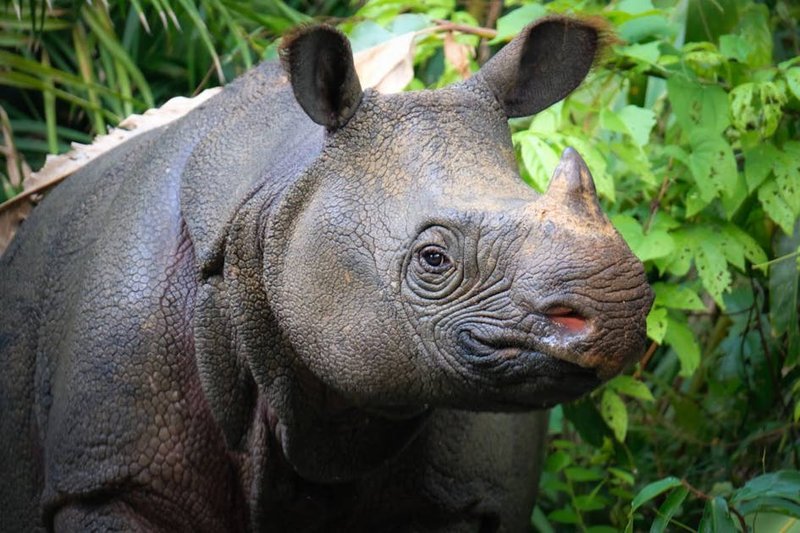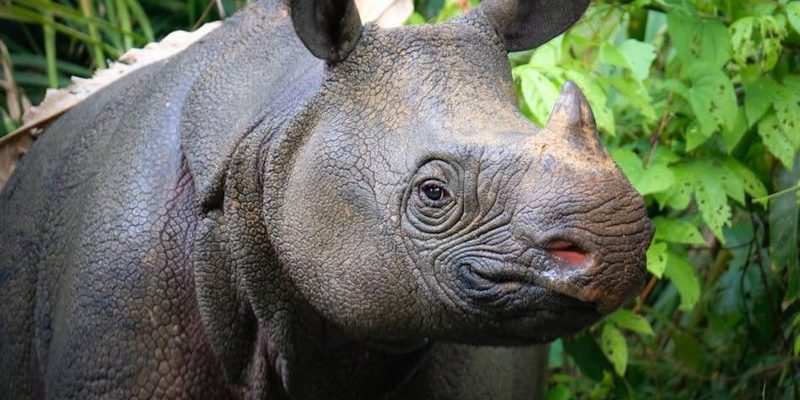
The Javan rhinoceros is confined mostly to a single national park in Indonesia, making its situation even more precarious. With more than just poaching threatening its survival, the Javan rhino’s story intertwines with habitat loss and climate change. So, what’s happening in the world of Javan rhinos? Let’s dive deeper, exploring the state of their existence, the threats they face, and the efforts underway to pull them back from the brink.
What Makes the Javan Rhinoceros Unique?
The Javan rhinoceros is the smallest of all rhino species, weighing in at around 1,500 kilograms. Its skin is thick and has a distinctive fold that gives it an armored look—like nature’s very own tank. But unlike its more famous cousins, the white and black rhinos, the Javan rhino is more elusive. This solitary herbivore prefers dense forests and can be hard to spot.
What sets the Javan rhino apart isn’t just its size or habitat but also its *genetic uniqueness*. The Javan rhino is the last surviving member of its genus, making it a living link to the past. Unfortunately, this uniqueness also contributes to its vulnerability; with such a small population, genetic diversity is limited, which could lead to serious health issues down the line.
You might be wondering why we should care about such a rare creature. Well, the Javan rhino plays a crucial role in its ecosystem. By munching on plants, it helps shape the environment and supports other species. In short, losing the Javan rhino would create a ripple effect through the ecosystem.
The Current Status of the Javan Rhinoceros
As of now, experts estimate that only about 78 Javan rhinos exist, all of which are located in Ujung Kulon National Park in Indonesia. That’s really not a lot when you think about it—like a high school class with just a handful of students. This small population makes them extremely vulnerable to extinction.
The IUCN (International Union for Conservation of Nature) lists the Javan rhino as *Critically Endangered*, meaning it’s facing an extremely high risk of extinction in the wild. Factors such as poaching and loss of habitat have drastically reduced their numbers over the years. While poaching for their horns is less of a threat compared to other rhino species, the Javan rhino is still not safe from human impacts.
Their situation raises critical questions about conservation efforts. Can we protect them effectively? Is it enough to focus on one national park, or do we need broader strategies to ensure their survival?
Threats Facing the Javan Rhinoceros
When we talk about what’s putting the Javan rhino in danger, we can’t ignore the big three: habitat loss, poaching, and climate change. Let’s break these down:
- Habitat Loss: As human populations grow, more forests are cleared for agriculture and development. This encroachment reduces the space where Javan rhinos can thrive. Think of it like a game of musical chairs—there just aren’t enough seats for everyone.
- Poaching: While it’s more targeted at other rhino species, any demand for rhino horns can lead to increased risk for the Javan rhino, especially if their population decreases further.
- Climate Change: Changes in climate can also affect their habitat, altering the availability of food and suitable living conditions. Rising sea levels, especially in low-lying areas like Indonesia, pose significant risks.
Addressing these threats isn’t just a matter of conservation but ensuring that future generations can witness these magnificent creatures.
Conservation Efforts for the Javan Rhinoceros
As daunting as the prospects may seem, there’s hope. Various conservation programs focus on the Javan rhinoceros, primarily concentrated in Ujung Kulon National Park. Local and international organizations are working tirelessly to protect the Javan rhino and its habitat.
One major initiative is the Ujung Kulon National Park Management, which aims to monitor rhino populations and ensure their habitats remain intact. This involves not just keeping an eye on the rhinos but also conducting regular patrols to deter poachers. The park is also involved in community outreach, educating local populations about the importance of preserving these unique creatures.
Moreover, the Javan Rhino Conservation Team works on scientific research to better understand the rhinos’ needs and behaviors. This information is crucial for developing effective conservation tactics. For instance, using camera traps helps in monitoring their population dynamics and health.
It’s like putting together a puzzle; every piece of information helps create a clearer picture of how to save the species.
How You Can Help
You might feel powerless when faced with the plight of an endangered species like the Javan rhinoceros, but every small action counts. Here are a few ways you can contribute:
- Spread Awareness: Share information about the Javan rhino on social media. The more people know, the more they can care.
- Support Conservation Organizations: Consider donating or volunteering with organizations that focus on wildlife conservation.
- Practice Responsible Tourism: If traveling to areas where rhinos live, choose eco-friendly and sustainable tours. This ensures your visit helps rather than harms their environment.
Sometimes, it’s easy to feel overwhelmed by these challenges, but remember that individual efforts can lead to significant change.
The future of the Javan rhinoceros hangs in the balance, but we still have time to act. By understanding the threats they face and supporting conservation efforts, we can play a part in ensuring their survival. The Javan rhino isn’t just an animal; it’s a symbol of what we stand to lose if we don’t take action now. Together, we can raise awareness, support protection efforts, and help keep this unique creature alive for years to come. Let’s turn the tide for the Javan rhino and keep its story going.

